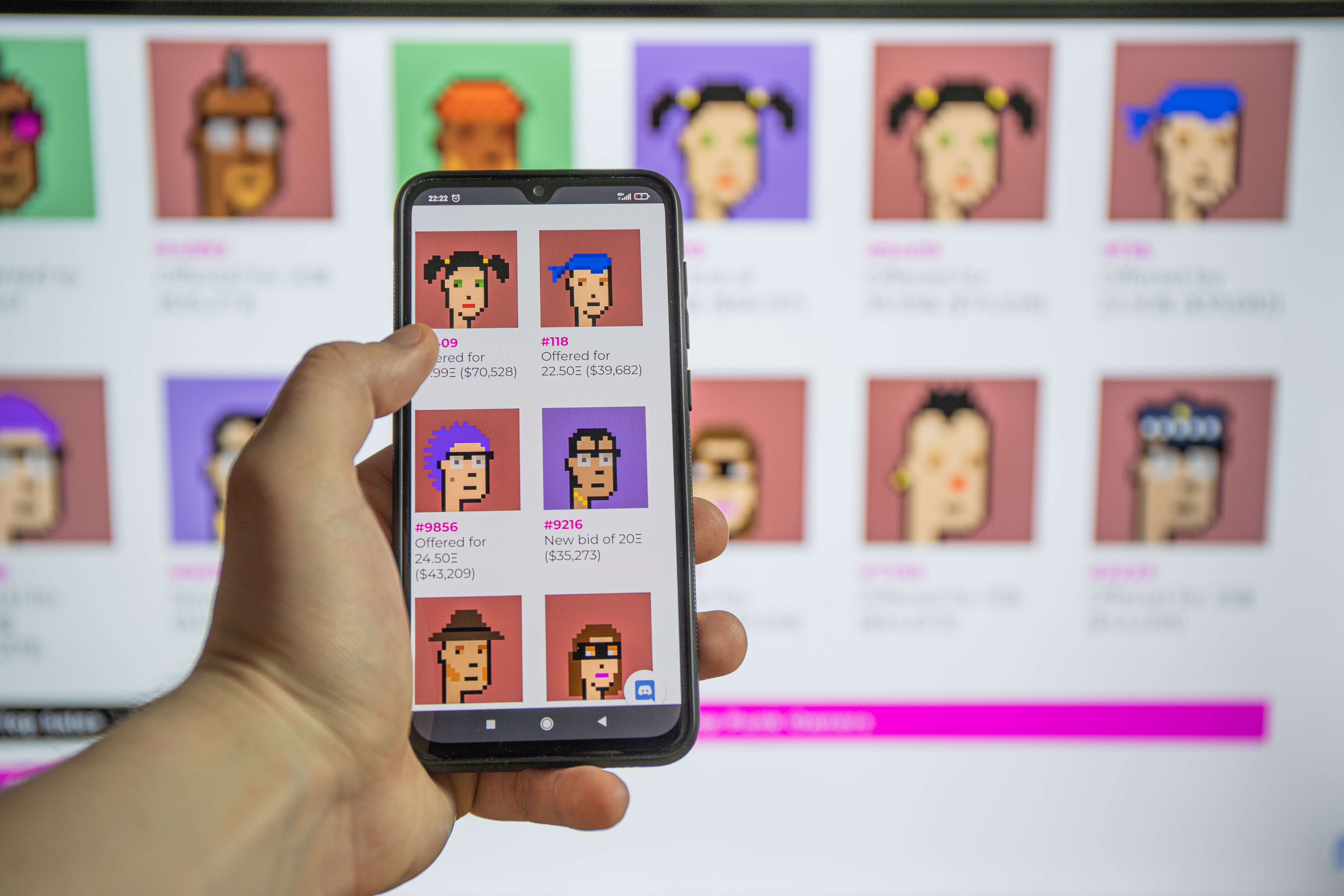Non-fungible token, abbreviated NFT, is a digital (computer) file intended to be unique and transferable, much like a physical token, work of art, or other collectible. Non-fungible tokens can be bought, sold, or traded over the internet. Many NFT’s are associated with works of art, video clips, or other media.
Images, songs, and other media are stored on computers in the form of digital files. Such files are easily copied and distributed over the Internet. It can thus be difficult or impossible to establish or enforce ownership of a particular file. Non-fungible tokens are an attempt to establish digital files as something unique that can be owned, rather than something generic that can be copied by anyone.
Fungible means interchangeable—that is, readily replaced with something similar. Non-fungible tokens are intended to be unique and thus not interchangeable.
Technology.
Ownership of a token is tracked through the use of blockchain technology. The blockchain is like a digital ledger that tracks the ownership of tokens. Information can be added to the blockchain but not removed or changed. So, when a token changes hands, for example, the ledger is not edited to change the identity of the owner. Rather, the new owner is simply added to the end of the blockchain. The blockchain thus retains a complete record of each token’s ownership history.
The blockchain is stored on many different computers, making it resistant to certain kinds of hacking. The information stored in the blockchain is available to anyone who knows how to read it.
The token itself is just a unit of computer code. But it can be embedded with or linked to a photograph, video clip, song, social media post, computer program, or any other kind of digital media or file. The blockchain may purport (claim) to track ownership of the media itself. But, it is unclear how much legal or other control the owner of a token may be able to exert over the attached media.
NFT’s tend to be bought and sold using cryptocurrency. Cryptocurrency is a computerized currency that also makes use of blockchain technology. Both cryptocurrency and NFT’s enable their holders to remain anonymous.
Examples.
Non-fungible tokens rose to public attention in 2021 with several high-profile NFT sales. For example, the NFT Everydays: The First 5000 Days by the online artist Beeple sold for over $69 million.
Many NFT offerings feature large collections of procedurally generated art. Such art is created from a template using a computer algorithm. The Bored Ape Yacht Club, for example, is a collection of NFT’s based on the template of a cartoon ape. Upon the collection’s creation, each ape was assigned a procedurally generated combination of features, including clothing, accessories, and expressions. Some such collections are marketed with the promise that their owners will have exclusive access to social media sites or online games. 
Controversy.
Many investors and other enthusiasts think that NFT’s and other blockchain technologies may revolutionize the way people conduct business online. Some hope that NFT’s will help artists to profit from their work in an era when media is easily copied or stolen. Some have even thought that NFT’s could one day be used to track medical records and other important information.
Critics have expressed doubt about the actual value of owning an NFT. Sale prices of NFT’s may rise and fall dramatically, and the market appears vulnerable to speculation (high-risk investment). Artists have also complained of scammers minting (creating) NFT’s of their work without permission.
Some of the same qualities that help to protect the blockchain against hacking make it susceptible to other kinds of fraud. The anonymous nature of blockchain transactions, for example, makes it easier for scammers to create hundreds of fake accounts. They can use these accounts to bid on NFT’s, fraudulently inflating their price. The ability of any user to read the blockchain raises serious concerns about the use of NFT’s to store medical records or other personal information.
